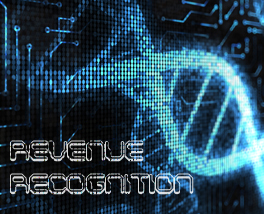The US Financial Accounting Standards Board (‘FASB’) recently issued authoritative guidance concerning the accounting for revenues arising from licenses of intellectual property. ASU 2016-10 Revenue from Contracts with Customers (Topic 606): Identifying Performance Obligations and Licensing (‘ASU 2016-10’) clarifies the application of the new revenue accounting standard [provide hyperlinks to WSB thought knowledge on this] to licensing revenues.
Specifically, ASU 2016-10 addresses whether to recognize licensing revenues at a point in time, or over a period of time and how to account for license renewals. As many life sciences licensing revenues are long-term arrangements, this ASU contains potentially game-changing guidance for licenses of intellectual property that should be considered sooner rather than later.
Background
The new revenue accounting standard was established by ASU 2014-09, Revenue from Contracts with Customers (‘ASU 2014-09’). This far-reaching standard establishes a uniform revenue recognition model based upon the following core principle: recognize revenue to depict the transfer of goods or services to customers in an amount that reflects the consideration to which the entity expects to be entitled in exchange for those goods or services. This replaces the current focus on recognizing revenue when risks and rewards are transferred, with an emphasis on when a change in control occurs.
Specific to licenses, ASU 2014-09 established the following concepts:
- A ”right to use” license is one that provides full functionality of the license to the customer at the time of the transfer
- Therefore, the performance obligation to the customer is satisfied at that point in time, and all license revenues under a ”right to use” license should be recognized then
- Conversely, the seller’s performance obligation associated with a ”right to access” license is satisfied over the license period.
- Accordingly, those license revenues will be recognized over the license term.
When to Recognize License Revenues
However, ASU 2014-09 didn’t go far enough in providing details concerning how to classify licenses into these two categories, and how to account for license renewals. ASU 2016-10 provides this implementation guidance. Here is a summary of the key impacts of ASU 2016-10 on licensing revenues:
- In order to determine which type of license it is, which is critical to the timing of the revenue recognition, look to the nature of the underlying intellectual property
- The underlying intellectual property (IP) is either ”functional” or ”symbolic”
- Licensing revenues from “functional” IP is recognized all at once because it is a ”right to use” license
- This IP is deemed functional because the customer can begin using it immediately, and the seller does not have to provide maintenance, future updates or enhancements in order for the customer to continue using it.
- For example, a pharmaceutical company licenses its patent rights to an approved drug compound for 5 years. The company determines that the patented drug formula has significant standalone value, and it has no obligations to support it over the 5 years. Therefore, IP is considered to be functional. The company will recognize the related revenues all at once because its performance obligation is satisfied at the point in time it transfers the patent rights to the customer.
- Most licenses of biological compounds or drug formulas will likely be functional IP.
“Symbolic” IP is an IP that is not found to be functional IP. It does not have a significant standalone utility. Rather, its usefulness depends upon the seller’s past or ongoing activities, such as support or maintenance. Accordingly, revenues from a license to symbolic IP are recognized over time because it is a ”right to access” type of license. For example, a sports team licenses its name to a manufacturer. The license will have no value if the team were to stop playing.
For both types, an entity may not recognize any revenue from a license before the IP is actually available to the customer, and the licensing period during which the customer is able to utilize the license has begun.
License Renewals & Extensions; Royalties
ASU 2016-10 clarifies that revenue should not be recognized for renewals or extensions of existing licenses until the renewal period begins. For example, on August 31, a life science company agrees to extend its license term, beginning January 1. The license was scheduled to expire on Dec. 31. Under ASU 2016-10, the license renewal revenue would be recognized on January 1. Under current guidance, license renewals are generally recognized when the parties agree to the renewal and the fee is received or collection of the amount is probable. Therefore, assuming all other revenue recognition criteria have been met, it would be recognized on August 31.
ASU 2016-10 also addresses when to recognize revenue for a sales-based or usage-based royalty stream related to a license.
Transition and Effective Date
The effective date and transition requirements for ASU 2016-10 are the same as those for ASU 2014-09. Public business entities will adopt the new guidance for annual reporting periods beginning after December 15, 2017. All other entities will adopt it in annual reporting periods beginning after December 15, 2018, and interim periods within annual reporting periods beginning after December 15, 2019. Early adoption is permitted, please check the guidance for details.




